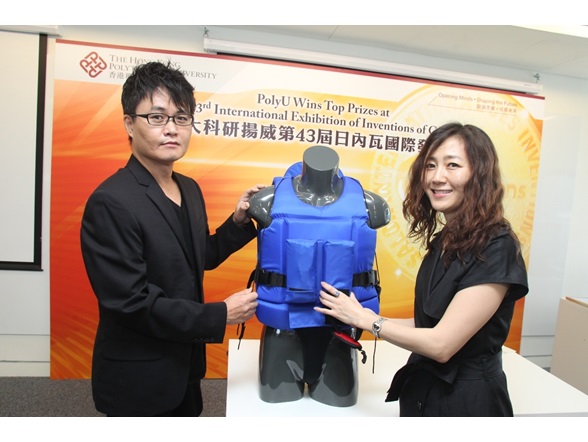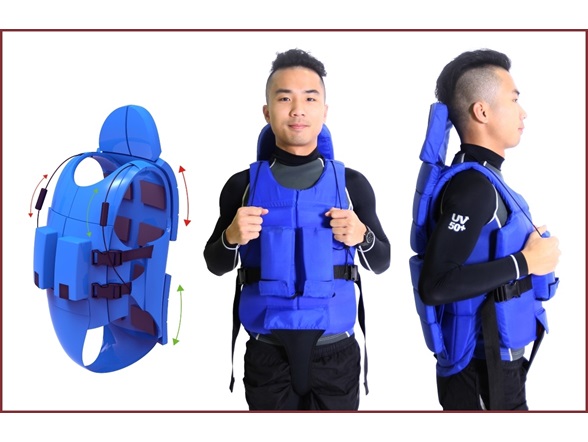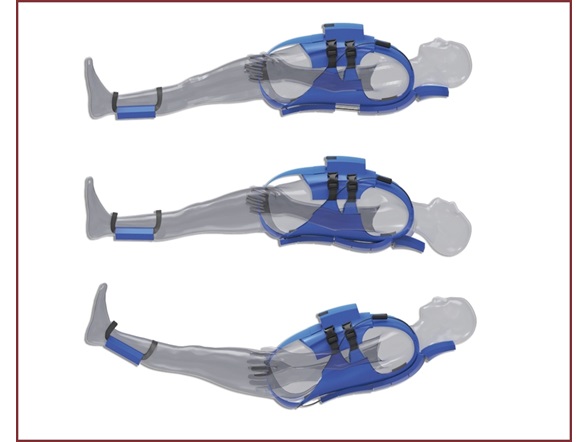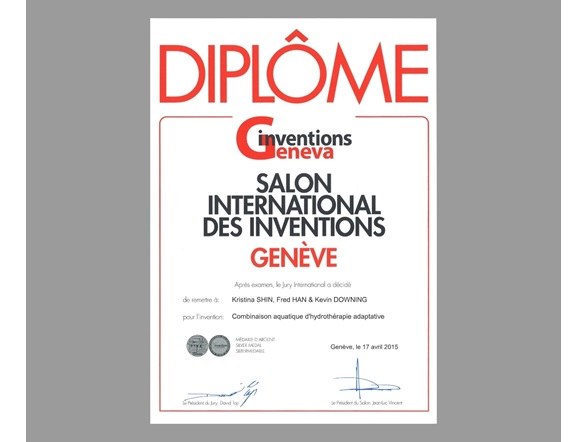Water is a symbol of rebirth in many religions. Coincidentally, it also gives paralytic, the elderly and post-surgical patients a new lease of life. Hydrotherapy is a rehabilitation method that involves performing physical exercises in water. It is useful to conditions such as soft tissue or bone injury, arthritis, post-surgery or joint replacement. Patients suffering from paralysis of both lower limbs and the elderly with compromised strength also benefit from hydrotherapy as a way of motor relearning and muscle training. However, hydrotherapy is expensive because each subject needs to be taken care of by two helpers. For this reason, Dr Kristina Shin, Assistant Professor, Institute of Textiles and Clothing and Mr Fred Han, Assistant Professor, School of Design led a research team to create the Adaptive Hydrotherapy Wetsuit (AHW) that gives users more control in water and requires only one therapist, making it more affordable.
Hydrotherapy vs physiotherapy on dry land
What is so special about exercising in water as opposed to doing it on dry land? Dr Shin explained, “The buoyancy of water supports 60% of body weight so that the joints and muscles are subject to less pressure. This is essential to users with limited mobility. Some exercises that cause too much pain or require too much muscle strength on dry land can be done safely and easily in water. Besides, water pressure helps move the blood more efficiently from the limbs to the heart. Water resistance also makes the workout more effective in training cardiovascular and respiratory systems as the mere action of breathing in water consumes seven times more energy than doing it on dry land.1 For subjects with little physical activities, this is a safe and fun way to improve fitness.”
Despite its benefits, not everyone can afford to have hydrotherapy frequently. “Obviously, there is potential risk performing exercises in water especially when the subject does not know how to swim. Floating aids help, but those available on the market aren’t tailor-made for the purpose. For instance, they don’t fit closely to the user’s body and don’t stay where they are. If they ride up over the user’s shoulders and come loose in a therapy session, it could be dangerous and having two therapists around is mandatory. But hiring two therapists isn’t affordable to everyone. That’s why our research team came up with AHW to make hydrotherapy more accessible.”
AHW: user-centred and cost effective
AHW is essentially a life jacket with movable foam panels that shift a user’s centre of gravity easily. There are two strings in the front that a user can pull up or down to move the floating foam at the back. The user can then change from standing to supine position freely without any help from a therapist. There are also other advantages. “First off, it has a top-loading design so that it can be put easily on users in wheelchair. It wraps around the body and under the crotch securely so that it doesn’t come loose in water. It also makes hydrotherapy more user-centred so that the subjects feel a lot more in control and confident. Most importantly, when a user can change between upright and supine positions by him/herself, only one therapist is required to conduct the session. That makes hydrotherapy much more affordable,” said Dr Shin.
There is also an unexplained feel-good factor about being in water, maybe because it makes you feel like you’re back in the womb. Even though a wheelchair could help resume mobility to some degree, most subjects feel confined and isolated in a wheelchair. “When subjects are able to stand upright and swim or float in water, they are less self-conscious and feel a lot better about themselves. They can engage and communicate with others more openly and more at ease. In our wear trial, an 85-year-old lady with severe osteoporosis and joint replacements on both knees managed to swim with AHW for 25 metres on her own. She didn’t know how to swim or float at all before the therapy and now she enjoys it a lot.”
AHW won a silver medal at the 43rd International Exhibition of Inventions of Geneva, Switzerland in April 2015.
[1] The American Parkinson Disease Association, Inc., “Aquatic Safety Issues specific to the PD patient,” in Aquatic Exercises for Parkinson Disease (2001), p.7, http://www.parkinsons.org.pk/download/Aquatic%20Handbook.pdf, retrieved on 10 September 2015.






